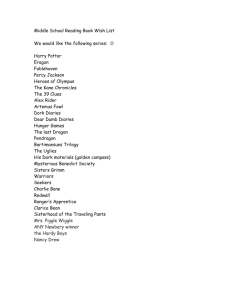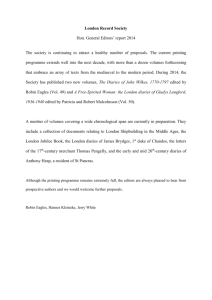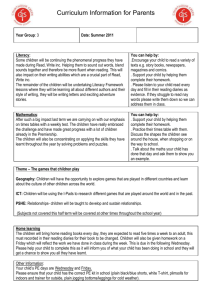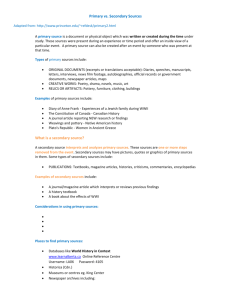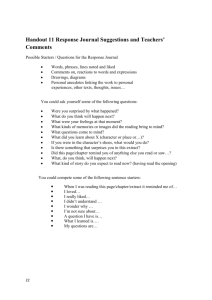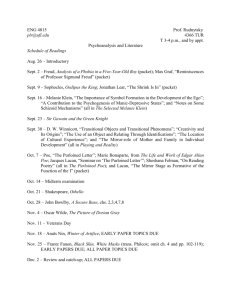Clara and William Stern - Max Planck Institute for Psycholinguistics
advertisement
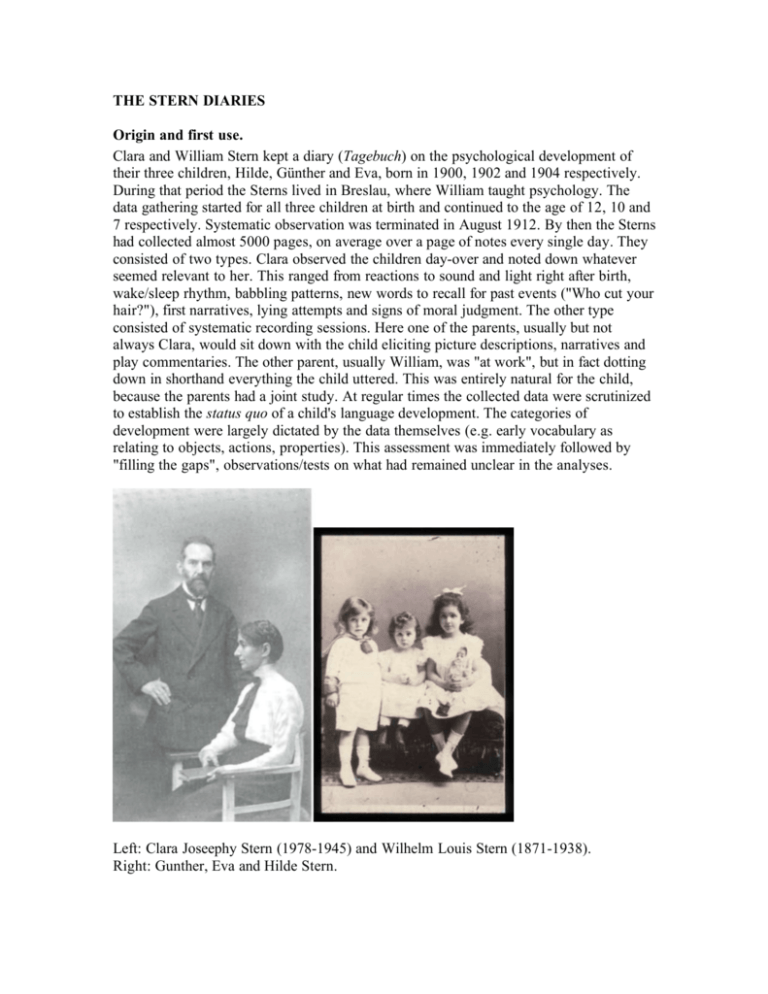
THE STERN DIARIES Origin and first use. Clara and William Stern kept a diary (Tagebuch) on the psychological development of their three children, Hilde, Günther and Eva, born in 1900, 1902 and 1904 respectively. During that period the Sterns lived in Breslau, where William taught psychology. The data gathering started for all three children at birth and continued to the age of 12, 10 and 7 respectively. Systematic observation was terminated in August 1912. By then the Sterns had collected almost 5000 pages, on average over a page of notes every single day. They consisted of two types. Clara observed the children day-over and noted down whatever seemed relevant to her. This ranged from reactions to sound and light right after birth, wake/sleep rhythm, babbling patterns, new words to recall for past events ("Who cut your hair?"), first narratives, lying attempts and signs of moral judgment. The other type consisted of systematic recording sessions. Here one of the parents, usually but not always Clara, would sit down with the child eliciting picture descriptions, narratives and play commentaries. The other parent, usually William, was "at work", but in fact dotting down in shorthand everything the child uttered. This was entirely natural for the child, because the parents had a joint study. At regular times the collected data were scrutinized to establish the status quo of a child's language development. The categories of development were largely dictated by the data themselves (e.g. early vocabulary as relating to objects, actions, properties). This assessment was immediately followed by "filling the gaps", observations/tests on what had remained unclear in the analyses. Left: Clara Joseephy Stern (1978-1945) and Wilhelm Louis Stern (1871-1938). Right: Gunther, Eva and Hilde Stern. First page of the diary on Günther, July 12, 1902. A first major publication based on these diaries was Clara & William Stern's Die Kindersprache (1907), which became a classic in the language acquisition literature. The second one was their Erinnerung, Aussage und Lüge in der erste Kindheit ("Memory, assertion and lie in early childhood") (1909). William made much use of the diaries in his book Psychologie der frühen Kindheit (1914) and Clara herself wrote one further book, Aus einer einer Kinderstube. Tagebuchblätter einer Mutter (1914) under the pseudonym Tony Meyer, in which she published, for a general public, fragments from her diaries, though with pseudonyms for the names of the three children. Further fate of the diaries. For over a century, the Stern diaries have been the most extensive and systematic data source on the acquisition of German. Their accessibility, however, hasn't been optimal. After the Jewish Sterns emigrated to the US in 1935, William's former student Gordon Allport helped them to deposit the diaries in Harvard's Widener library. However, nobody ever showed any interest in them. Ultimately, daughter Eva moved the diaries as a permanent loan to the library of Hebrew University, where they still reside. It was Werner Deutsch of the Max Planck Institute for Psycholinguistics in Nijmegen who, with Eva's unremitting support in Jerusalem, had the full diaries transcribed. Since then they have been electronically available through the Max Planck Institute (though not through CHILDES format). (introduction by Willem J. M. Levelt 7 feb 2011)
